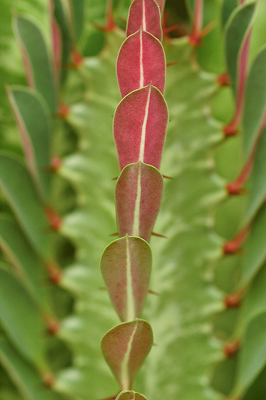I kept close to the window all morning, hoping I'd hear a familiar scream. I'd go outside, too, and peer way up into the live oak branches. Finally, about noon, I spotted the little fellow about two stories high on a thick limb. He just huddled there, all alone. I called to him and stood there for the longest time, looking up. (The neighbors probably thought I was nuts.) I went inside and threw a tortilla with cheese into the toaster oven. Then I went outside.
"
C'mon, baby,
c'mon!" I said over and over again. He looked at me curiously from high atop his perch. Around and around I went at the tree's base, keeping my eye on him, talking gently but loud enough for him to hear me.
Then he carefully climbed head first part way down the tree!
I was flabbergasted. He seemed to be coming toward me! Forget lunch. I had to save that baby! Nearly an hour passed while he sat in the crook of the live oak, probably about 12 feet high. He'd look at me, and I'd look at him. "
C'mon, baby.
C'mon!
C'mon, baby.
C'mon!" I said those words over and over and over again. How I wanted him to come DOWN.
And then he did! He started edging head first down the oak to where I leaned against the tree, calling to him gently. I was amazed. "
C'mon, baby!
C'mon" Here he came, slowly, a little uncertain. Finally, I could stretch my hand just enough to barely touch his tiny nose. His little brown eyes stared at me. I stepped up on the oak, stretched some more, and quickly put my hand around him. He struggled, but I hung on tight. I knew if I lost my grip, he'd surely try to escape.
We did it. In a few seconds, I had him safe against my neck.
Inside the house, I placed him in the same towel that had covered his sisters the evening before.

Once again, Lindsey and I loaded up for the trip to Wildlife Rescue near
Kendalia. Diane, who'd been there last night when we delivered the other two, accepted our third sibling. Yep, a boy, she pronounced. However, this little guy had an indelicate health problem .... seems he'd tried to nurse on himself, and his penis had scabbed over. The staff vet would likely have to give him some anesthesia so the wound could be doctored. Otherwise, he likely couldn't urinate. Poor baby. But Diane seemed to think he'll heal just fine. And when the time's right, the three will be released back into the wild, probably on the Wildlife
Rescue's acreage.
She also said it's not usual for baby squirrels to seek humans when orphaned. Still, seeing that little baby inch down the tree toward ME felt like a divine miracle .... and an answer to prayer.

 Monday, August 25, 2008–UPDATE
Monday, August 25, 2008–UPDATE–I called Wildlife Rescue this morning and left a message, asking how our squirrel children are doing. A volunteer called me back this afternoon with a status report. "Katie says they're GREAT" exclaimed Sally, who was just as excited and happy as me to get the good news. They're ALL such nice folks at Wildlife Rescue!

 In the evening, James spotted this load lounging in the Sanctuary, and I got a few photos. The water's muddy because the ox beetle shoved dirt from its hole in a pole near the plate. The toad didn't care!
In the evening, James spotted this load lounging in the Sanctuary, and I got a few photos. The water's muddy because the ox beetle shoved dirt from its hole in a pole near the plate. The toad didn't care! In the soggy soil, we spotted some kind of tiny, round mushrooms.
In the soggy soil, we spotted some kind of tiny, round mushrooms. Another mushroom? It's definitely not a "plant."
Another mushroom? It's definitely not a "plant."














































